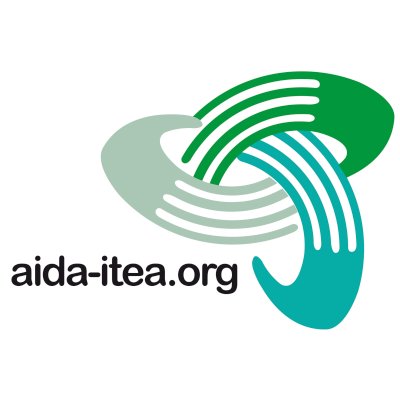Location
La Asociación Interprofesional para el Desarrollo Agrario (AIDA) es una asociación sin ánimo de lucro, abierta a todos los profesionales del sector técnico, social y económico agrario. La Asociación no persigue fines lucrativos ni políticos, sino de interés social y técnico en el campo agrario.
La Asociación se creó el 5 de octubre de 1967, aunque no es hasta 1973 cuando adopta el nombre de Asociación Interprofesional para el Desarrollo Agrario. En su origen era la Asociación de Técnicos Diplomados por el Centro de Investigación y Desarrollo Agrario del Ebro (CIDADE). Nace con la finalidad de crear un medio para facilitar la difusión y el intercambio de conocimientos, para dar ayuda profesional entre los asociados, así como contribuir al avance científico y técnico del sector agrario.
En la actualidad se mantienen estos fines, consiguiendo esta difusión a través de la organización periódica de Jornadas, Jornadas sobre Producción Animal los años impares y Jornadas sobre Producción Vegetal los años pares, donde se presentan comunicaciones y los profesionales comparten sus conocimientos e inquietudes.
AIDA edita la revista ITEA-Información Técnica Económica Agraria, que aparece indexada en las bases de datos de revistas científicas más importantes (SCI Expanded, Journal Citation Reports/Science Editions, ICYT, CABI y Scopus) y que en la actualidad se encuentra accesible en open-access.
En la actualidad la Asociación cuenta con unos 300 socios
Fines de la asociación
La Asociación persigue los siguientes fines:
- Proporcionar a los asociados toda la información y ayuda profesional que puedan serles útiles.
- La publicación de una revista periódica denominada ITEA-Información Técnica Económica Agraria.
- Facilitar a los asociados los contactos entre sí y con las diferentes instituciones a las que pertenecen.
- Organizar periódicamente unas Jornadas de Estudio, así como la coordinación o participación en conferencias, coloquios, seminarios, mesas redondas y demás manifestaciones que puedan interesar a los asociados para perfeccionar su formación profesional.
- Orientar, desarrollar y apoyar toda clase de iniciativas que puedan ayudar al desarrollo técnico, económico y social agrario.
- Cualesquiera otros fines lícitos que puedan considerarse de interés para los asociados dentro del espíritu que inspira la constitución de esta Asociación.
Members:
Resources
Displaying 11 - 14 of 14Preliminary characterization of "Parda de Montaña" beef cattle farms in Asturias, Cantabria and Castilla y León [Spain]
Surveys were conducted to 141 farmers registered in the FERPAM at Asturias (A), Cantabria (C) and Castilla and Leon (CL) regions, with the aim to know animal production system characteristics. Racial diversity was high (57.4% of the cows are "Parda de Montaña" (PM) and the 25.2% are cross with other breeds) and only 24.1% of farms have PM pure-breed animals. The average herd size was 32.1 cows in A, 35.3 in C and 64.6 in CL. The 95% of farms are located in mountain areas. The animals are kept indoors 3.7 months/year, as average. The average age of calves weaning was 5.8 months.
Sustainability assessment of the Latxa breed dairy system in the Basque Country [Spain] using MESMIS methodology
MESMIS methodology (Ridaura et al., 2002) has been tested to assess sustainability of two different commercial flocks within the breeding scheme of the Latxa sheep in the Basque Country. The evaluation is based on technical, economical, environmental and social indicators derived from a SWOT analysis of the system. The assessment has been made by the comparison of two commercial flocks managed under different environmental conditions by means of specific nutrition and reproduction practices.
Morphological variability of Ripollesa sheep populations
Among the autochthonous breeds in Spain, the Ripollesa sheep breed is the most common in Catalonia. It is rustic, with a convex profile, white wood of entrefine type and a characteristic pigmentation. Following the recommendations of the FAO, the morphologic characterization of the Ripollesa ewe has been carried out, as well as the analysis of its variability. A quantitative study from twelve zoometric measures and weight was carried out in a total of 224 females.
Analysis of some aspects related with the carcass quality in calves of Avileña-Negra Iberica breed
By means correlation and simple and multiple regression analysis, in this experiment were studied the correlation coefficients among the objective and subjective variables of the carcass and the relations between the weight of the main carcass cuts and the carcass weight. The carcass weight accounted for 55-93% of the variation of weight de the different carcass cuts.


